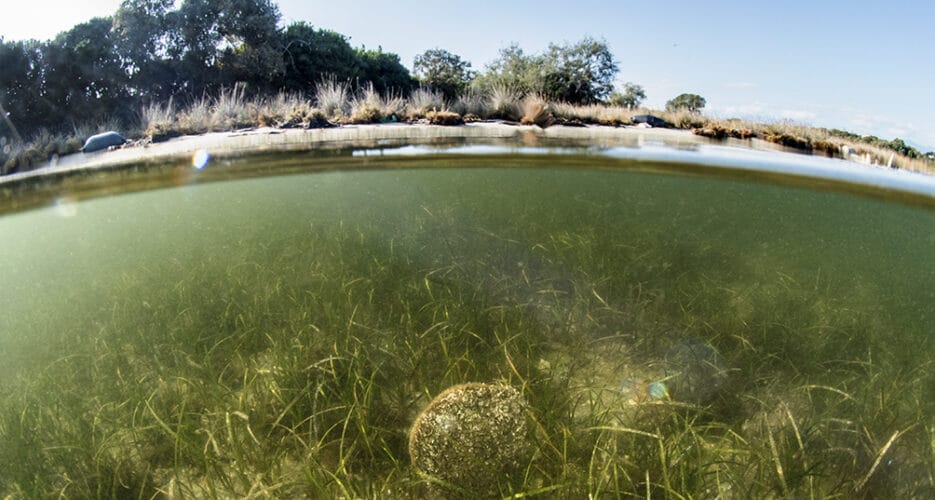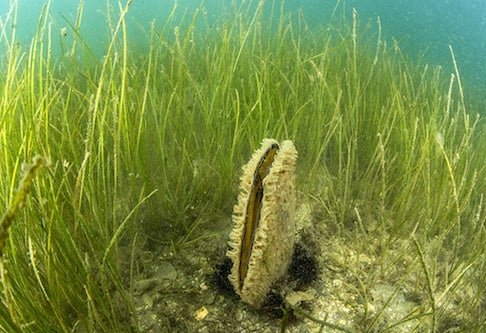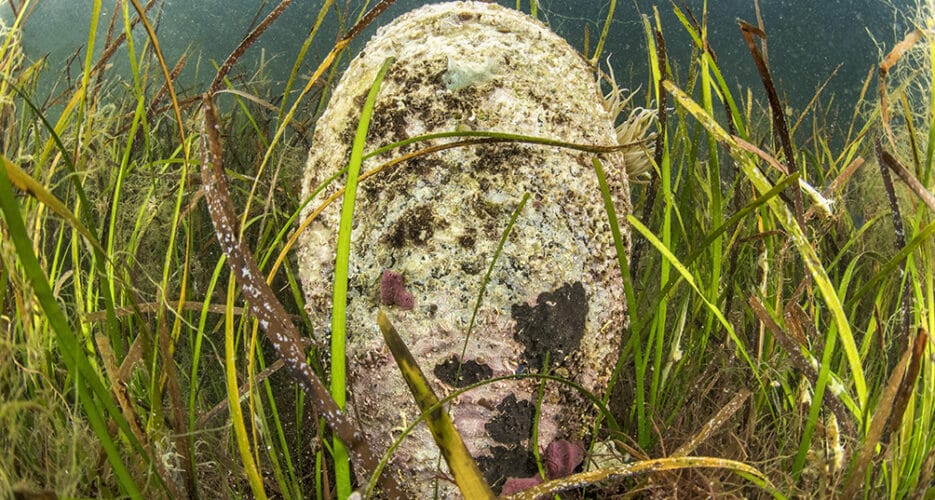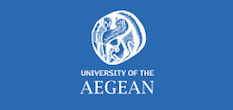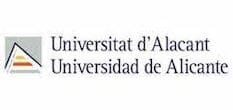Context
The populations of fan mussels endemic in the Mediterranean, already strongly impacted by the human-generated pressure that is exerted on this bivalve and on its favoured coastal habitat, the Posidonia oceanica seagrass beds, have been severely hit by the emergence of a parasite in 2016 which decimated 99.9% of individuals at most of the known sites. A few pockets of resistance to this pandemic have however been observed in deltas and marine lagoons.
Programme
The main aim of this LIFE programme, carried out by a consortium of European participants, is to guarantee the long term protection and conservation of the fan mussel through actions focused on raising awareness, acquiring knowledge and enhanced protection of the environment (inventories, monitoring of resistant individuals, reproduction, embryology, genetics and parasitology), and the reseeding of the environment by juveniles issued from capture in order to reinforce or redevelop the existing or extinct natural populations once the parasite has disappeared.
Phase 1
Inventories are carried out in several Mediterranean countries, in areas where resistant populations persist. This is the case notably in the areas around deltas (Ebro, Po, Rhone), and in coastal lagoons (Mar Menor on the Costa Blanca, Thau lagoon in Languedoc, the Diana and Urbinu lagoons in Corsica, and in Greece).
Phase 2
Individuals collected at the above-mentioned sites are placed in experimental and / or public aquariums to study the reproduction and embryonic development.
Phase 3
The sequencing of the genome of P. nobilis represents an indispensable tool to achieve better knowledge of the biology and the physiology of the species in these particular environments that are the lagoons and coastal ponds. The possible presence of the parasite must be monitored in the water and in the sediments (via the technique of environmental DNA), and in the fan mussels.
Phase 4
Obtaining juveniles in the aquarium or in the natural environment might make it possible to carry out reseeding in the open sea once the pandemic caused by the parasite Haplosporidium pinnae is over and when the biological and physical-chemical conditions have once again become favourable.
Last updated on : 25 March 2022
Partnerships
Financial partners
Programmes européens LIFE
European scientific partners
FUNDACIóN UNIVERSIDAD CATóLICA DE VALENCIA SAN VICENTE MáRTIR (IMEDMAR-UCV), Espagne (coordinateur du programme)
UAEGEAN(PANEPISTIMIO AIGAIOU, UNIVERSITY OF THE AEGEAN – RESEARCH UNIT), Grèce
UNINA – DB(Università degli Studi di Napoli Federico II – Dipartimento di Biologia), Italie
IRTA(Institut de Recerca i Tecnologia Agroalimentàries), Espagne
CSIC(AGENCIA ESTATAL CONSEJO SUPERIOR DEINVESTIGACIONES CIENTIFICAS – CSIC (IMEDEA)), Espagne
UA(UNIVERSIDAD DE ALICANTE), Espagne
EEARM(Ecologistas en Acción Región de Murcia), Espagne
Local partners
Institut Méditerranéen d’Océanologie (MIO UMR 7294), France
GIS Posidonie, (Aix-Marseille Université).
Parc Régional de la Côte Bleue
Parc national des Calanques
Parc régional de Corse (Réserves de Scandola, des Bouches de Bonifacio, du Cap corse)
Réserve du Larvotto (Monaco),
Zone Natura 2000 (Golfe de Saint Tropez)
STARESO (Calvi-Corse)
OEC : Office de l’Environnement Corse
Office de la mer (Marseille métropole)
CPIE : La Ciotat (Provence), Ajaccio (Corse)
Basso, L., Vázquez-Luis, M., García-March, J.R., Deudero, S., Alvarez, E., Vicente, N., Duarte, C.M., Hendriks, I.E., 2015. The Pen Shell, Pinna nobilis: a review of population status and recommended research priorities in the Mediterranean Sea. Adv. Mar. Biol. https://doi.org/10.1016/bs.amb.2015.06.002.
R. Bunet, JM Prévot, N. Vicente, JR. García-March, R. Martinović, J. Tena-Medialdea, D. Joksimovic, J-L. Bonnefont, S. Coupé. 2021. First insight into the whole genome shotgun sequence of the endangered pen shell Pinna nobilis: a giant bivalve experiencing a mass mortality event. Journal of Molluscan Studies, doi : 10.1093/mollus/eyaa04 l
Foulquié M., Dupuy de la Grandrive R., Dalias N., Vicente N., 2020. Inventaire et état de santé des populations de Pinna nobilis (L.1758) dans l’étang de Thau (Hérault, France). Marine Life on line..
Gonzalez-Wanguemert, M. et al. Gene pool and connectivity patterns of Pinna nobilis in the Balearic Islands (Spain, Western Mediterranean Sea): Implications for its conservation through restocking. Aquat. Conserv. Mar. Freshw. Ecosyst. 29, 175–188 (2019).
Katsares, V., Tsiora, A., Galinou-Mitsoudi, S. & Imsiridou, A. Genetic structure of the endangered species Pinna nobilis (Mollusca:Bivalvia) inferred from mtDNA sequences. Biologia 63, 412–417 (2008).
Kersting, D.-K., Garcia-March, J., Templado, J., 2006. Evaluation of Spondylus gaederopus Linneo, 1759 Mass Mortality in the Columbretes Islands Marine Reserve (Western Mediterranean, Spain). Int. Congr, Bivalvia.
Diego K. Kersting1*, Maite Vázquez-Luis2, Baptiste Mourre3, Fatima Z. Belkhamssa4, Elvira Álvarez2, Tatjana Bakran-Petricioli5, Carmen Barberá6, Agustín Barrajón7, Emilio Cortés8, Salud Deudero2, José R. García-March9, Salvatore Giacobbe10, Francisca Giménez-Casalduero11, Luis González12, Santiago Jiménez-Gutiérrez13, Silvija Kipson5, Javier Llorente14, Diego Moreno7, Patricia Prado15, Juan A. Pujol16, Jordi Sánchez17, Andrea Spinelli18, José M. Valencia19,20, Nardo Vicente21,22 and Iris E. Hendriks23. 2020- Recruitment Disruption and the Role of Unaffected Populations for Potential Recovery After the Pinnanobilis Mass Mortality Event.Frontiers in Marine Science (on line doi 10.3389, march 2020)
Rajko Martinovic, Slavia Petovic, Danijela Joksimovic, Robert Bunet, Sylvain Couvray, Damien Kirchhofer, Rémy Simide, Jose Rafael Garcia-March, Jose Tena-Medialdea, Ana Castelli, Zoran Gadic, jean-Luc Bonnefont, Nardo Vicente. Recruitment and Growth of the Fan Mussel Pinna nobilis in the Montenegrin Adriatic Coast and Comparison with the Western Mediterranean, https://link.springer.com/chapter/10.1007/698.2021_749
Meinesz, A., Mercier, D., 1983. Sur les fortes mortalités de Spondyles (Spondylus gaederopus Linné) observées sur les côtes de Méditerranée. Trav. Sci. Parc Nation. Port-Cros 9, 89–95.
Moreteau J.C., N. Vicente, 1982
Évolution d’une population de Pinna nobilis L. (Mollusca Bivalvia). Malacologia, 22 (1-2) : 341-345.
Planes S., Morage T., Nakamura N. et Peyran C., 2020.Etude des grandes nacres, Pinna nobilis, dans les ports et sur le littoral de la région. CRIOBE – Région Occitanie. (diapositives)
Rabaoui, L. et al. Genetic variation among populations of the endangered fan mussel Pinna nobilis (Mollusca: Bivalvia) along the Tunisian coastline. Hydrobiologia 678, 99–111 (2011).
Sanna, D., P. Cossu, G. L. Dedola, F. Scarpa, F. Maltagliati, A.Castelli, P. Franzoi, T. Lai, B. Cristo, M. Curini-Galletti, P.Francalacci & M. Casu, 2013. Mitochondrial DNA reveals genetic structuring of Pinna nobilis across the Mediterranean Sea. PloS ONE 8(6): e67372.
Sanna, D., G. L. Dedola, F. Scarpa, T. Lai, P. Cossu, M. Curini-Galletti, P. Francalacci & M. Casu, 2014. New mitochondrial and nuclear primers for the Mediterranean marine bivalve Pinna nobilis. Mediterranean Marine Science 15(2): 416–422.
Rémy Simide , Sylvain Couvray , Nardo Vicente .Présence de Pinna nobilis (L.1758) dans l’étang littoral de Diana (Corse). marinelife-revue.fr – : 1-4 ;mise en ligne : octobre 2019.
Sandrine Ruitton,Claude Lefebvre, 2021 Toward a recovery of the pen shell Pinna nobilis in the French Mediterranean open sea? Sci. Rep. Port-Cros Natl. Park, 35: 429-434 (2021)
Vicente N., 2020. La Grande Nacre de Méditerranée Pinna nobilis, Un coquillage bivalve plein de noblesse. Sciences Technologies Santé. Ed. PUP, 152 p.
Vicente N.,2021- Présence de Pinna rudis sur les côtes méditerranéennes françaises. Marinelife-revue.fr,1-10 (on line)
Vion A., Bunet R., Vicente N., 2021- Rough pen shell Pinna rudis (L.1758)
Flyer. Institut Oceanographique Paul Ricard. 6 p.























